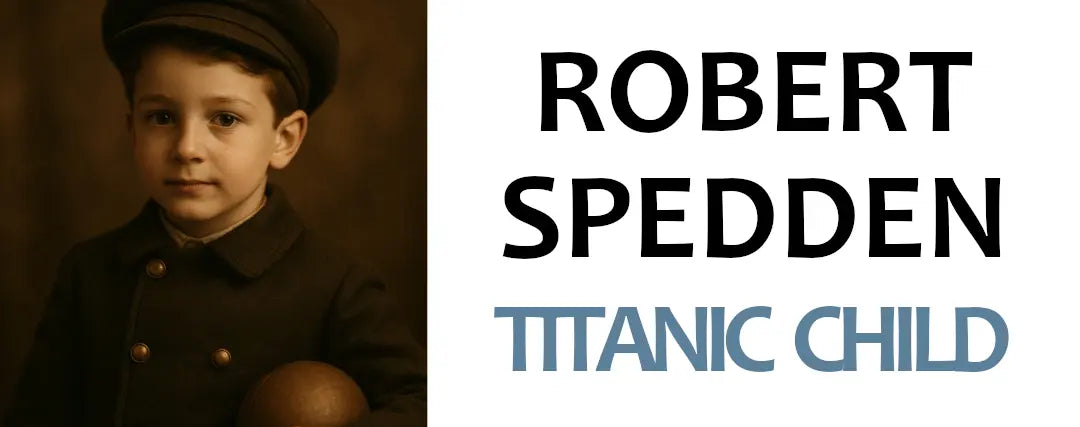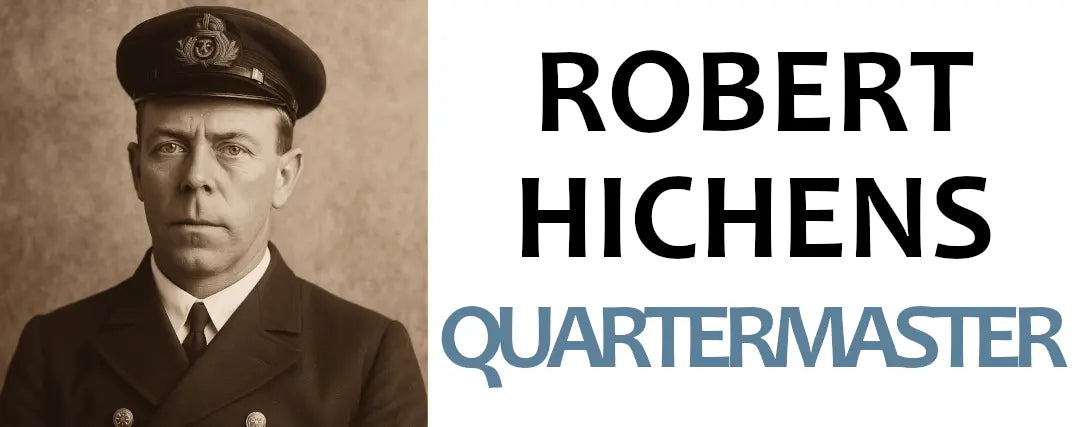Table of Contents
- 🎩 Who is Caledon Hockley in Titanic?
- 🕰️ Was Caledon Hockley based on a real person?
- 🎂 How old was Caledon Hockley in Titanic?
- 💔 Why didn’t Rose love Caledon?
- 💌 Did Rose cheat on Cal with Jack?
- ⚔️ Caledon vs Jack Dawson - A rivalry of worlds
- 🏛️ Caledon’s role in Titanic’s class system
- ⚰️ What happened to Caledon Hockley?
- 💼 How rich was Cal in Titanic?
- ✉️ What did Rose’s letter to Cal say?
- 🎬 Billy Zane - Other movies featuring Cal’s actor
- 🖼️ Caledon Hockley in photos and pop culture
- 📖 What does the Titanic script say about Cal?
- 📚 Caledon Hockley: character analysis
- ❓ FAQ about Caledon Hockley
🎩 Who is Caledon Hockley in Titanic?
Caledon Nathan Hockley, often known as Cal, is a central fictional character in James Cameron’s 1997 masterpiece Titanic. Played by Billy Zane, he is introduced as the wealthy and arrogant fiancé of Rose DeWitt Bukater. From his very first appearance, Caledon Hockley represents the elite upper class of the Titanic’s first-class passengers.
Cal is portrayed as a man of great power, status, and possessiveness. He is sharply dressed, well-spoken, and obsessed with maintaining control over Rose, whom he considers part of his "property". His character stands in direct contrast with Jack Dawson - the poor but free-spirited third-class artist who captures Rose's heart. This rivalry forms one of the emotional cores of the film.

Though not a villain in the classic sense, Cal’s behavior is manipulative, entitled, and increasingly desperate as the story progresses. He uses his wealth and influence to bend others to his will, whether it's bribing officers or falsely accusing Jack. His actions expose the deep flaws in the class system aboard the RMS Titanic.
Caledon Hockley’s character was crafted to embody the harsh social realities of the era. He remains one of the most talked-about characters in the film, often raising the question: Was Caledon Hockley based on a real person? We’ll explore that next.
🕰️ Was Caledon Hockley based on a real person?
One of the most frequent questions fans ask is: Was Caledon Hockley a real person? The answer is no, Cal is a fictional character, created specifically for the 1997 film Titanic by director James Cameron. However, while he didn’t exist in history, his personality and role were inspired by the attitudes and behaviors of the ultra-rich men who boarded the Titanic in 1912.
Caledon Hockley embodies the arrogance, entitlement, and class superiority often associated with certain figures of the Gilded Age. He may not have a direct real-life counterpart, but some traits were likely drawn from well-documented first-class passengers. Names like J. Bruce Ismay or even certain wealthy American industrialists come to mind when considering the cold pragmatism and self-preservation instincts Cal shows during the ship’s sinking.

Online searches for phrases like “Caledon Hockley real name” or “Caledon Hockley Wikipedia” often reflect the public's curiosity about whether such a man truly walked the decks of the Titanic. While he didn’t, his character serves as a realistic representation of the upper-class mindset of the time, a stark contrast to the lives of passengers like Jack Dawson.
🎂 How old was Caledon Hockley in Titanic?
Many fans still ask: how old was Caledon Hockley in Titanic? While the film never states it explicitly, James Cameron’s script gives us a clue. Caledon Nathan Hockley was born in 1882, which means he was about 30 years old when he boarded the Titanic in April 1912.
This makes him around 12 years older than Rose DeWitt Bukater, who is only 17 in the movie. This age gap highlights the imbalance in their relationship, both emotionally and socially. Rose is a young woman in search of freedom, while Cal is already an established figure of power and tradition.

Searches like Caledon Hockley age, how old is Caledon Hockley in Titanic or Caledon Hockley real person show just how much interest surrounds this character. His age, combined with his status, contrasts sharply with Jack Dawson's youth and spontaneity. That contrast lies at the heart of the film's emotional tension.
💔 Why didn’t Rose love Caledon?
From the very first scenes of the film, it becomes clear that Rose does not love Caledon Hockley. Their relationship is one of social arrangement, not affection. Caledon represents wealth, status and control. Rose, however, is trapped in a world she didn’t choose.
Cal may have been her fiancé, but he treated her more like a possession than a partner. His protective gestures quickly turn into acts of dominance. That’s why many fans still wonder, why didn’t Rose love Cal? The answer lies in their lack of emotional connection. Rose craved freedom and authenticity, not diamonds and strict etiquette.

Throughout Titanic, Rose’s eyes open to the possibility of another life, especially when she meets Jack Dawson. Their connection is based on mutual respect and shared dreams. Caledon, by contrast, represents the world Rose is desperately trying to escape. He may have been rich, but his heart remained cold and possessive.
💌 Did Rose cheat on Cal with Jack?
This question has sparked countless online debates since Titanic's release. From a strict relationship standpoint, yes, Rose kissed Jack and spent the night with him while she was still engaged to Caledon Hockley. But the emotional context changes everything.
Rose was never truly in love with Cal. Their engagement was arranged for social and financial reasons. Caledon viewed Rose as a beautiful asset rather than a partner. She was constantly monitored, silenced, and told how to behave. So when Rose met Jack Dawson, a free-spirited artist who listened to her, encouraged her, and saw her as an equal, she discovered what genuine connection felt like.

Rather than asking if Rose cheated, the better question might be: Was she ever really committed to Cal in her heart? The film strongly suggests the answer is no. Her heart belonged elsewhere long before her body did. For Rose, choosing Jack was an act of liberation, not betrayal.
⚔️ Caledon vs Jack Dawson - A rivalry of worlds
Few rivalries in cinema are as symbolic as the one between Caledon Hockley and Jack Dawson in Titanic. These two men didn’t just compete for Rose’s heart, they embodied two radically different worlds.
Caledon represented the old aristocracy: powerful, wealthy, and obsessed with control. He believed money could solve anything, including love. With his expensive suits, tailored arrogance, and sense of entitlement, he never imagined Rose could choose someone else, especially not a penniless artist.
Jack, on the other hand, was the voice of freedom. Coming from the third class with nothing but dreams and a sketchbook, he lived life with passion and spontaneity. He treated Rose with respect, wonder, and warmth, not as a possession, but as a person.

This clash wasn’t just about romance. It was about values, class, and the fight between security and freedom. Rose’s ultimate decision symbolized a rejection of privilege in favor of authenticity. In this sense, the rivalry between Jack Dawson and Caledon Hockley reveals much more than a love triangle, it reflects the Titanic’s own divide between the upper and lower decks.
➡️ Want to dive into Jack’s fate? Read our full blog about Jack Dawson, his true age, tragic ending, and untold secrets aboard the Titanic.
🏛️ Caledon’s Role in Titanic’s Class System
In Titanic, Caledon Hockley is more than just a controlling fiancé. He is the perfect personification of the upper class elite of the early 20th century. His wealth, manners, and attitude toward others reflect a society deeply rooted in social hierarchy and privilege. From the luxurious dining halls to the restrictive traditions, Cal lives in a world where status defines worth.

Caledon’s behavior toward Jack Dawson, a third-class passenger, highlights the rigid class divide aboard the Titanic. He sees Jack as an unworthy intruder, not because of his character, but because of his lack of pedigree. His actions, from attempting to bribe ship officers to controlling Rose’s future, expose how the elite used power and influence to maintain their social dominance.
Even in moments of crisis, Cal tries to use his status to escape the sinking ship, offering bribes for safety. This illustrates how social inequality played a direct role in the tragedy. Many passengers in third class perished, while the wealthy had a much higher chance of survival. Cal’s storyline reminds us that the Titanic wasn’t just a ship, it was a floating microcosm of Edwardian society, divided by class, wealth, and opportunity.
⚰️ What happened to Caledon Hockley?
In the movie Titanic, Caledon Hockley survives the sinking of the ship, but not without controversy. While others perish in the freezing Atlantic, Cal manages to secure a place on a lifeboat, allegedly by bribing a crew member and pretending to care for a lost child. His actions reveal a man driven by desperation, privilege, and self-preservation.

However, Cal’s survival did not lead to happiness. In the final part of the film, Rose reveals that Cal took his own life during the 1929 Wall Street crash, after losing his entire fortune. This dramatic downfall illustrates just how fragile his world truly was, a world built entirely on wealth, appearances, and control.
Ultimately, while Cal escaped the Titanic disaster, he could not withstand the collapse of his identity when stripped of status and money. His tragic end serves as a symbol of the end of an era and the failure of a man who believed money could buy everything, including love.
💼 How rich was Cal in Titanic?
In James Cameron's Titanic, Caledon Hockley is portrayed as one of the wealthiest passengers aboard the RMS Titanic. Coming from an influential Pittsburgh steel dynasty, Cal represents the pinnacle of American industrial fortune in the early 20th century. While the film does not specify his exact net worth, every detail of his character screams luxury and exclusivity.

From the moment he boards the Titanic, Cal is surrounded by signs of extreme wealth. He stays in one of the most expensive first-class suites, travels with a valet, dines at the most exclusive tables, and presents Rose with the iconic Heart of the Ocean jewels, described in the film as being worth over ten million dollars. His wardrobe, mannerisms, and even the way he tips staff members are constant reminders of his upper-class status.
Historians and fans often estimate Cal’s fictional net worth based on real magnates of the time, such as Andrew Carnegie or J. P. Morgan. By this comparison, it’s likely that Caledon Hockley would have been worth the equivalent of hundreds of millions of dollars today. His character was designed to reflect not just wealth, but an almost untouchable social power.

Cal’s fortune is not just a backdrop in the story. It plays a central role in defining the power imbalance between him and Jack Dawson. His money allows him to manipulate situations, control people, and attempt to buy love. This financial dominance is a key part of the emotional tension between the main characters and adds depth to the film's commentary on class division.
✉️ What did Rose’s letter to Cal say?
At the end of Titanic, one of the most subtle yet powerful moments comes when Caledon Hockley discovers a letter left by Rose. While the film doesn't show the full content of the message, it offers a glimpse into her final words to a man she once agreed to marry. The note simply says: "Darling, now you can keep us both locked in your safe."
This message is deeply symbolic. Rose leaves the Heart of the Ocean behind, not out of sentimentality, but as a form of liberation. Her words carry a sharp tone of irony, exposing how Cal tried to possess both her and the necklace. To her, they were equally objects in his world, things to control, display, and keep under lock and key.
More than a farewell, the letter is Rose’s declaration of freedom. It shows her rejection of a life of wealth without love, and her choice to break away from Cal’s grip. In just a few words, she reclaims her identity, her body, and her future. The message may be short, but it marks a turning point in her life and a definitive end to Cal’s illusion of control.
🎬 Billy Zane - Other movies featuring Cal’s actor
Caledon Hockley was brilliantly portrayed by Billy Zane, whose performance in Titanic remains one of the most memorable villain roles in modern cinema. But his career stretches far beyond the icy decks of the Titanic. Born in Chicago in 1966, Billy Zane is an accomplished actor with a wide-ranging filmography across action, drama, romance, and even animation.
Before Titanic, Zane had already appeared in major productions. He played Match in Back to the Future (1985), one of Biff Tannen’s gang members, and took on the role of Hughie Warriner in the intense thriller Dead Calm (1989), where he starred alongside Nicole Kidman. These early roles helped shape his image as a charming yet dangerous presence on screen.

In 1996, just one year before Titanic, Billy Zane starred as the title character in The Phantom, a cult superhero film based on the classic comic strip. While the movie didn’t break box office records, it has since gained a loyal fanbase and showcased Zane’s ability to lead an action franchise.
Post-Titanic, he appeared in various genres, from historical dramas like The Beloved to quirky comedies such as Zoolander, where he played a fictionalized version of himself. His voice has also been featured in animated series and video games, showing his versatility as a performer.
Although many remember him as the controlling fiancé aboard the Titanic, Billy Zane has proven himself to be much more than Caledon Hockley. His career continues to evolve, with appearances in independent films and television projects, keeping his presence alive in the film industry long after Titanic’s release.
🖼️ Caledon Hockley in photos and pop culture
Though Caledon Hockley is a fictional character, his image has become iconic in pop culture since the release of Titanic in 1997. The combination of Billy Zane's elegant yet menacing portrayal and the character's distinctive 1912 aristocratic look has turned Cal into a symbol of upper-class arrogance, often referenced in memes, fan art, and parody videos.
Online, fans search for “Caledon Hockley real photos”, curious to know whether this cold and commanding figure was inspired by a true historical person. While there are no real photographs of Cal, many edits and fan visuals recreate his look using stills from the movie. His tailored suits, slicked-back hair, and haughty posture are instantly recognizable.
Caledon is also frequently included in character analysis videos, TikToks, and Reddit discussions exploring the deeper themes of the film. Some viewers even sympathize with him, debating whether he was truly evil or just a product of his time and class. These reinterpretations have helped keep the character alive in digital culture.

Beyond fan works, Caledon Hockley has become a cinematic reference for toxic masculinity, power imbalance, and the contrast between love and obligation. His name is often cited in conversations about great villains in romance films, alongside characters like Gaston from Beauty and the Beast or Warner from Legally Blonde.
In the end, Cal isn’t just a Titanic character. He has entered the larger conversation about how we represent wealth, control, and gender roles in popular media. His legacy continues far beyond the sinking ship.
📖 What does the Titanic script say about Cal?
The original Titanic script written by James Cameron offers valuable insight into the character of Caledon Hockley. From the earliest scenes, Cal is described not only through his actions but also with precise wording that highlights his status, personality, and inner conflicts.
In the script, Cal is introduced as a man of considerable wealth and confidence. He is often described as possessive, proud, and controlling, especially in scenes involving Rose. Cameron’s annotations emphasize his obsession with appearances and social status. For example, one of his first lines focuses on the grandeur of the Titanic, showing how he views everything, including Rose, as an extension of his success.

Some lines in the screenplay, such as "You will honor me, as a wife is required to honor her husband", reveal his old-fashioned views on gender roles. The dialogue paints Cal as a symbol of oppressive tradition, making the emotional gap between him and Rose even more striking.
Interestingly, a few scenes that further explore Cal’s background and motivations were cut from the final film. In the extended script, we learn more about his expectations regarding marriage and social advancement. These scenes humanize him slightly, though his actions remain morally questionable.
Cal’s final lines in the movie, when he frantically searches for Rose amidst the chaos, reveal a man losing control. The script highlights this contrast between the calm, composed Cal at the beginning and the desperate, unraveling man by the end. His collapse mirrors the downfall of the elite class during the sinking of the Titanic.
For fans and film scholars, revisiting the Titanic screenplay adds depth to Cal’s character and shows how carefully crafted he was to embody a fading world of privilege and control.
📚 Caledon Hockley: character analysis
Caledon Nathan Hockley is more than just a villain in the Titanic movie. He represents a specific type of character: the entitled, upper-class man who believes everything can be bought, including love. His portrayal is layered with themes of power, insecurity, and social decline.
Throughout the film, Cal embodies the values of the Edwardian elite: wealth, control, appearances, and tradition. Yet beneath his polished exterior lies deep vulnerability. His need to control Rose comes not only from arrogance, but also from fear: fear of losing her, fear of being publicly shamed, fear of not measuring up to expectations.

Cal’s jealousy and possessiveness are central to his role. He is not just upset that Rose is drawn to Jack; he is outraged that someone of lower class could challenge his authority. This makes Cal a symbol of the old world, threatened by change, desperate to preserve dominance at all costs.
Unlike Jack, who values freedom and connection, Cal clings to rigid structures. His worldview is transactional: he provides luxury, and expects loyalty in return. This is why Rose’s rebellion feels like betrayal to him, not just romantic, but existential.
By the end of the film, Cal is left alone. His wealth has protected him from death, but not from emptiness. While Jack dies with dignity and love, Cal survives with bitterness and regret. The contrast between them is one of the film’s most powerful messages.
In short, Cal is not just a one-dimensional antagonist, he’s often cited in Titanic character analysis as a symbol of elite downfall. He is a tragic figure in his own way, a man who confuses control with love, and status with happiness.
❓ FAQ about Caledon Hockley
Who is Caledon Hockley based on?
Caledon Hockley is a fictional character, not directly based on a real historical figure. However, his personality and background were inspired by the wealthy elite of the early 20th century. James Cameron likely drew from the behavior and style of real-life millionaires aboard the Titanic to shape Cal's character.
Did Caledon Hockley survive the Titanic?

Yes, in the film, Cal survives the sinking of the Titanic. He sneaks onto a lifeboat by pretending to care for a lost child, showcasing his manipulative and selfish nature. Later, it's revealed that he lost all his fortune during the stock market crash of 1929 and eventually took his own life.
How old was Caledon in Titanic?
Although the film doesn’t state his age explicitly, it’s estimated that Caledon Hockley was around 30 years old. Actor Billy Zane, who portrayed him, was 31 during the filming of Titanic in 1997.
Why didn’t Rose love Cal?
Rose didn’t love Cal because their relationship was built on social pressure, wealth, and control, not on emotional connection. Cal treated Rose like property, expecting obedience in exchange for luxury. She felt suffocated and found in Jack a sense of freedom, passion, and authenticity she never had with Cal.

Does Rose marry Cal?
No, Rose never marries Cal. She ultimately chooses her own path, rejecting the life of privilege and control that Cal offered. After the sinking, she changes her name to Rose Dawson and starts a new life.
Did Rose cheat on Cal?
Yes, technically Rose was still engaged to Cal when she fell in love with Jack and shared intimate moments with him. However, her heart had already moved on, and her connection with Jack was sincere and transformative.
➡️ Want to discover Rose’s secrets too? Read our full blog about Rose DeWitt Bukater.
How much older was Cal than Rose?
Rose is 17 years old in the film. Cal appears to be in his early 30s, making the age gap around 13 to 15 years. This significant difference reinforces the dynamic of power and control in their relationship.
What did Rose's letter to Cal say?
In the film, Rose leaves a note with Cal after deciding to run away with Jack. The letter simply says, “Darling, now you can keep both of us locked in your safe.” It symbolizes her final rejection of Cal’s control over her life and her reclaiming of her freedom.

🧭 Conclusion: A Complex Villain in a Timeless Story
Caledon Hockley remains one of the most iconic antagonists in film history. Through his arrogance, wealth, and entitlement, he embodies the rigid class divisions and societal pressures that the Titanic tragically revealed. Yet behind the polished façade of the wealthy heir lies a man driven by control, insecurity, and fear of rejection.
His story, though fictional, continues to spark curiosity and debate, proving that even the villains in great love stories leave a lasting mark. Whether despised or pitied, Caledon’s character is a vital part of Titanic’s enduring legacy.
✨ Relive the legend. Wear the romance. ✨
➡️ If you’re fascinated by Titanic’s characters, class conflicts, and iconic love stories, discover more on our Titanic blog.
*All illustrations featured in this article are original creations made by us for illustrative purposes only.
They do not depict the actual individuals mentioned and do not reproduce any elements protected by existing copyrights.






